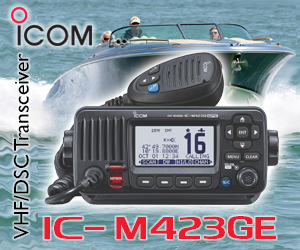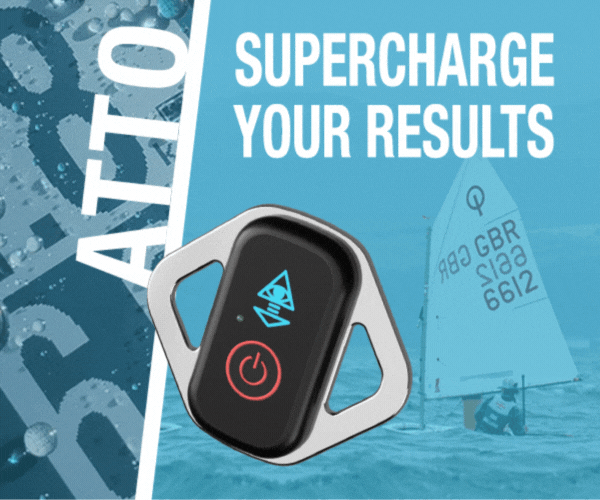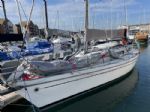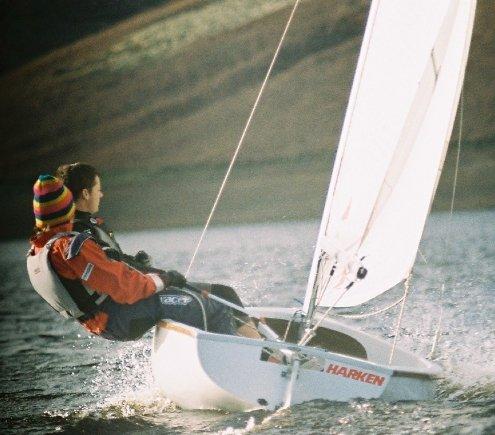











Boats for sale
| Rossiter Pintail Mortagne sur Gironde, near Bordeaux |
 |
| Laser 140101 Tynemouth |
 |
| Laser 28 - Excellent example of this great design Hamble le rice |
 |
List classes of boat for sale |
Starboard Rounding Windward Mark Incident |
Post Reply 
|
Page <1234 7> |
| Author | ||
Quagers 
Far too distracted from work 

Joined: 24 Oct 06 Location: United Kingdom Online Status: Offline Posts: 279 |
 Post Options Post Options
 Quote Quote  Reply Reply
 Topic: Starboard Rounding Windward Mark Incident Topic: Starboard Rounding Windward Mark IncidentPosted: 15 May 13 at 5:37pm |
|
|
Sorry I should have been clearer, that was in relation to boats on the same tack based on the original description which is somewhat unclear.
The important point is if the overlap exists when Blue changes tack (ie. blue passes head to wind) if the overlap doesn't exist at that point the yellow has no room. However rereading the description it sounds like the overlap would have existed as blue passed head to wind.
Edited by Quagers - 15 May 13 at 5:39pm |
||
 |
||
Quagers 
Far too distracted from work 

Joined: 24 Oct 06 Location: United Kingdom Online Status: Offline Posts: 279 |
 Post Options Post Options
 Quote Quote  Reply Reply
 Posted: 15 May 13 at 5:46pm Posted: 15 May 13 at 5:46pm |
|
|
Ok new picture, is this what happened? Again the important point is the overlap when blue passes head to wind, even if thats subsequently broken again blue must thereafter give yellow mark room. If there is no overlap at that point yellow gets no room and must avoid.  < id="adlesse_unifier_magic_element_id" style="display:none;">
< id="adlesse_unifier_magic_element_id" style="display:none;"> |
||
 |
||
Brass 
Really should get out more 
Joined: 24 Mar 08 Location: Australia Online Status: Offline Posts: 1151 |
 Post Options Post Options
 Quote Quote  Reply Reply
 Posted: 15 May 13 at 11:07pm Posted: 15 May 13 at 11:07pm |
|
Your speculation is unnecessary.
Rule 18 does not apply to boats on opposite tacks on a beat to windward (rule 18.1( a )) and boats on opposite tacks on a beat to windward, that is, until the other boat passes head to wind are by definition, not overlapped.
OP said
Because OP said 'we started to keep clear' I take it that he meant that the other boat reached her close hauled course clear ahead and OP was obliged to keep clear under rule 12. The boats could have become overlapped any time after other boat passed head to wind making both on the same tack, but the geometry is unlikely: most likely other boat was clear ahead from the time she passed head to wind.
Next thing that happened was OP became overlapped to windward inside the other boat, in the zone, so the condition for rule 18.2( a ) was fulfilled.
Edited by Brass - 15 May 13 at 11:07pm |
||
 |
||
Quagers 
Far too distracted from work 

Joined: 24 Oct 06 Location: United Kingdom Online Status: Offline Posts: 279 |
 Post Options Post Options
 Quote Quote  Reply Reply
 Posted: 15 May 13 at 11:14pm Posted: 15 May 13 at 11:14pm |
|
|
It's quite possible though that even though the boat ended up to leeward clear ahead, an overlap did exist when port passed head to wind and was subsequently broken as the bore off.
Its not something OP would necessary notice because its not something people look for but is what this protest would hinge on in the room.
< id="adlesse_unifier_magic_element_id" style="display:none;">Edited by Quagers - 15 May 13 at 11:14pm |
||
 |
||
Brass 
Really should get out more 
Joined: 24 Mar 08 Location: Australia Online Status: Offline Posts: 1151 |
 Post Options Post Options
 Quote Quote  Reply Reply
 Posted: 15 May 13 at 11:22pm Posted: 15 May 13 at 11:22pm |
|
Edited by Brass - 16 May 13 at 1:15am |
||
 |
||
Brass 
Really should get out more 
Joined: 24 Mar 08 Location: Australia Online Status: Offline Posts: 1151 |
 Post Options Post Options
 Quote Quote  Reply Reply
 Posted: 15 May 13 at 11:49pm Posted: 15 May 13 at 11:49pm |
|
|
||
 |
||
Brass 
Really should get out more 
Joined: 24 Mar 08 Location: Australia Online Status: Offline Posts: 1151 |
 Post Options Post Options
 Quote Quote  Reply Reply
 Posted: 16 May 13 at 12:03am Posted: 16 May 13 at 12:03am |
|
Edited by Brass - 16 May 13 at 12:34am |
||
 |
||
Marcus 
Newbie 
Joined: 13 May 13 Online Status: Offline Posts: 2 |
 Post Options Post Options
 Quote Quote  Reply Reply
 Posted: 16 May 13 at 11:02am Posted: 16 May 13 at 11:02am |
|
|
Interesting discussion and thanks for all the comments. I was a little inaccurate in my original description in stating that B tacked clear ahead and to leeward of us; what I should have said was that they completed their tack clear ahead onto a close hauled starboard tack course that was to leeward of our own. We then started to luff to keep clear and in doing so gained the overlap. The first of Quagers two diagrams is therefore correct. I take it that Rule 18.2 (a) together with the definition of Mark Room then should allow me to firstly pass to port of the mark unhindered and then to tack onto port to round it?
Actually, as I said in my original description I took a penalty because I was uncertain that Rule 18.2 (a) switched on since we acquired the overlap within the zone. In a very reasonable discussion with A after the race we agreed that we were both uncertain. On reading the rules aftewards we thought the incident had some similarity to the that covered by Rule 18.3 but this rule didn't apply of course because we, A, weren't fetching the mark.
As Jim originally suggested we could alternatively have slowed down rather than luffing. B would then have had room but wouldn't be able to tack back onto starboard anyway. The end result would be the same either way, we, A, would end up rounding the mark first. However, as Jim points out it's sometimes hard to think these things through in the heat of the moment!
Ultimately, is the moral, as Brass suggests, be careful when tacking in the zone?
|
||
 |
||
JimC 
Really should get out more 

Joined: 17 May 04 Location: United Kingdom Online Status: Offline Posts: 6662 |
 Post Options Post Options
 Quote Quote  Reply Reply
 Posted: 16 May 13 at 11:15am Posted: 16 May 13 at 11:15am |
|
|
Yeah, brass, who is very good on this rules stuff, has clarified the situation to my satisfaction: what we have here is a situation where you can establish an overlap in the zone and still be entitled to mark room because the other boat tacked in the zone.
I suppose the casual sailors understanding of this might be that you should reckon that if you tack in the zone you have very few rights. |
||
 |
||
RS400atC 
Really should get out more 
Joined: 04 Dec 08 Online Status: Offline Posts: 3011 |
 Post Options Post Options
 Quote Quote  Reply Reply
 Posted: 16 May 13 at 1:25pm Posted: 16 May 13 at 1:25pm |
|
|
Is it not the whole of rule 18 that does not apply between boats on opposite tacks?
The boat which tacks onto STBD must keep clear until she is past head to wind, thereafter she must give the other boat room to keep clear. As I read it though, the inside boat has no specific right to room at the mark.
|
||
 |
||
Post Reply 
|
Page <1234 7> |
| Forum Jump | Forum Permissions  You cannot post new topics in this forum You cannot reply to topics in this forum You cannot delete your posts in this forum You cannot edit your posts in this forum You cannot create polls in this forum You cannot vote in polls in this forum |
Bulletin Board Software by Web Wiz Forums® version 9.665y
Copyright ©2001-2010 Web Wiz
Change your personal settings, or read our privacy policy
Copyright ©2001-2010 Web Wiz
Change your personal settings, or read our privacy policy











 Printable Version
Printable Version Delicious
Delicious Digg
Digg Facebook
Facebook Furl
Furl Google
Google MySpace
MySpace Newsvine
Newsvine reddit
reddit StumbleUpon
StumbleUpon Twitter
Twitter Windows Live
Windows Live Yahoo Bookmarks
Yahoo Bookmarks Topic Options
Topic Options